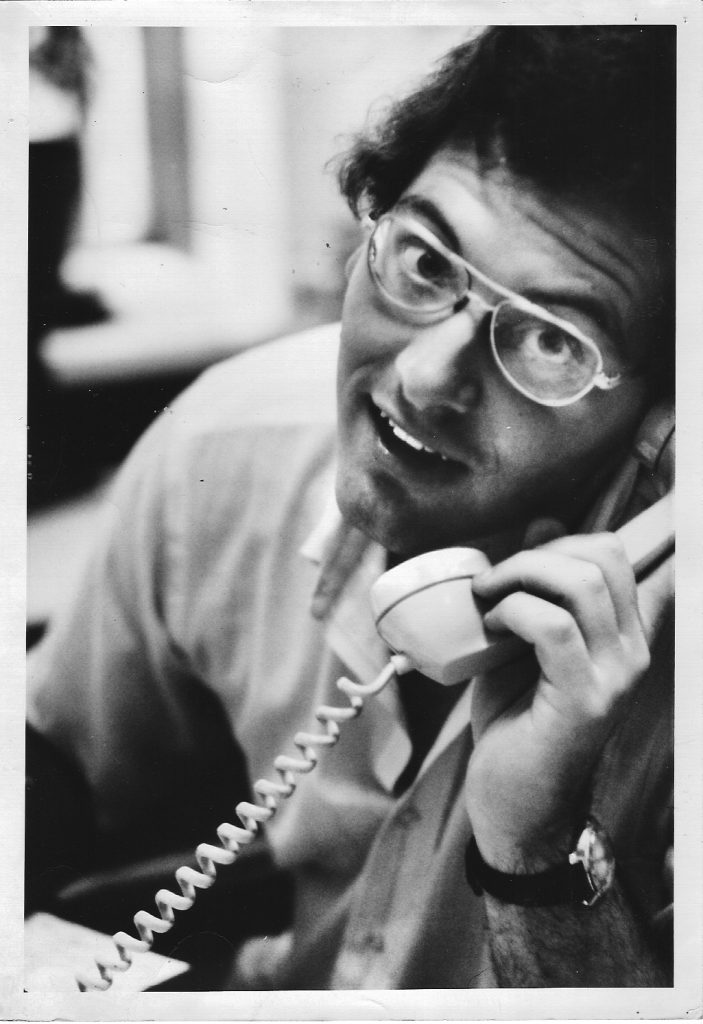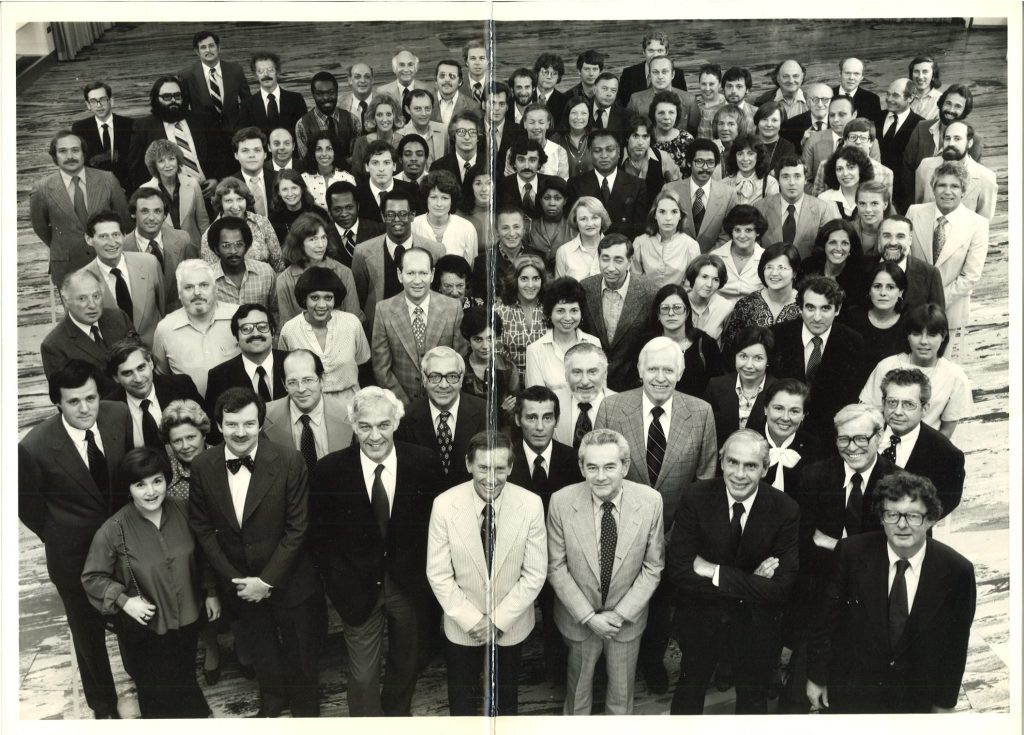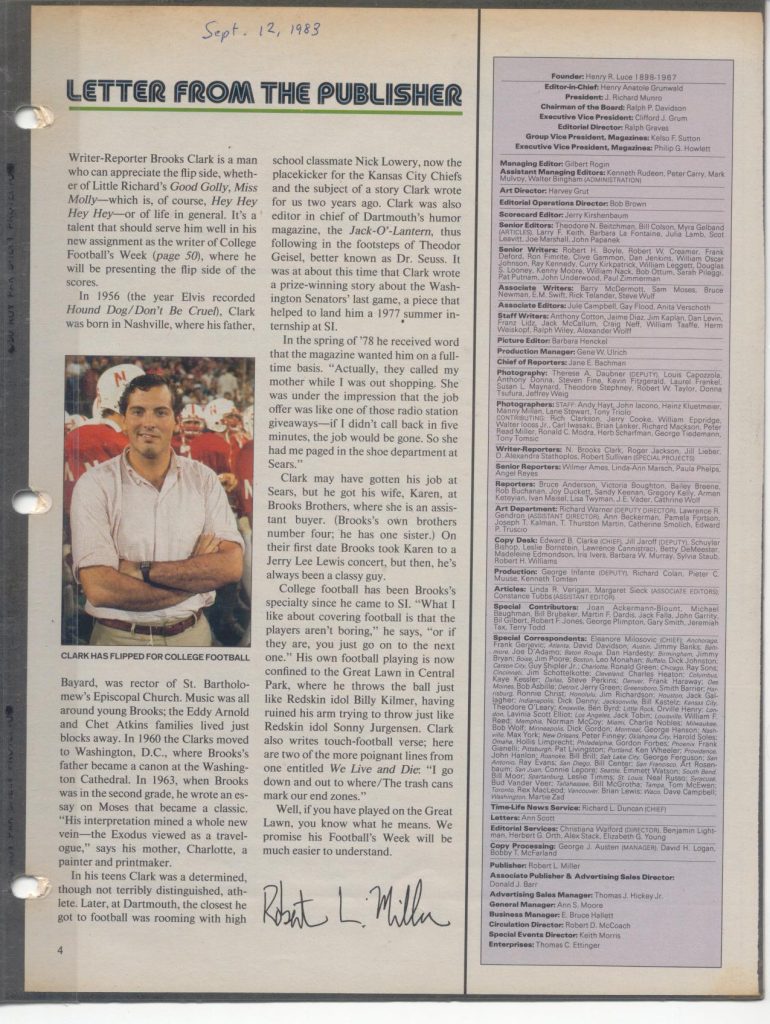I was 20 years old—not much older than the students I teach at UT—between my junior and senior years in college, when I first entered the Time & Life Building and rode the elevator to the 20th floor to start my summer internship at Sports Illustrated. I was wearing a tan corduroy suit. (I had bought a khaki suit at the store in my tiny college town, but it was raining that day, and I didn’t want to ruin it.)
I saw the large photo on one end of the elevator bank of the memorable play at the plate from the 1971 World Series, when the ball was behind the Orioles catcher and the umpire. Up strode Reporter Roger Jackson, who shook my hand and took me on a tour of the floor, past the offices of editors like Gil Rogin and Roy Terrell, past the art department, where each week the work of photos of the likes of Neil Leifer, Heinz Kluetmeier, Walter Iooss Jr., Manny Millan, Knoxville’s own Patrick Murphy-Racey, and so many others were edited on light boxes and shown to the editors and placed in the magazine.
The reporters mostly sat in the Bullpen, guarded by octogenarian British receptionist Betty Marcus and working under the guidance of Chief of Reporters Merv Hyman, co-author of a Joe Paterno biography who looked much like his childhood friend Vince Lombardi. Roger showed me my office, with a smoked-glass sliding door and four fabric-covered walls. Down the hall from the Bullpen, it was next door to the office of Dan Jenkins, who I did not meet that summer but did thereafter as I fact-checked his amazing stories. His novel Semi-Tough had just been made into a movie, so he was a bigger deal than ever.

The deputy chief of reporters, Chrissy Walford, showed me how to fact-check stories. A kinder person has never walked the earth. After a nature story about a bear named Two Toes, I checked a profile by Daphne Hurford of Conrad Dobler, headlined “The Meanest Man in the NFL.” Confirming Hurford’s prose, I asked Dobler’s mother, “Was Conrad mean as a child?” She paused and replied, “Well, he was kinda ornery.” Hurford had written that he had “played Joan of Arc” with his sister. “Did Conrad play Joan of Arc with his sister?” I asked. Again a pause. “Well, he set her on fire, if that’s what you mean.”
Yes, I knew that I was the luckiest young fool in the country. I’d won a spot in the American Society of Magazine Editors internship program and been selected by SI, probably because my resume included my love of the Washington Redskins and my story about Frank Howard’s home run in the last game of the Washington Senators in 1971, which ended in a riot. I immediately loved all my co-workers. I saw Tom Jones leaving P.J. Clarke’s after my second day of work—the required celeb-sighting of Big Apple newbies.
I bought a silver Schwinn Varsity bicycle that I rode to work and all over Manhattan, especially the day after the Blackout of 1977. I was sure I saw the Son of Sam in the bank, an unkempt person looking shady and nervous. I was relieved when the New York Post ran the headline “Caught!” when David Berkowitz was found and arrested. The dogs in the apartment next door had “instructed him to kill.” I was asked to stay a couple of extra weeks at the end of the summer, and miraculously was offered a job after graduation.
I am still in touch with the friends I made in the 10 years I worked at SI. Of course, they all are heartsick over the recent news that the whole staff, what remained of it, got the mitten, and this national institution, started in 1954, will effectively be no more. “Sports Obliterated,” read the New York Post headline.

I am always happy to recount the amazing moments from those years. Interviewing Bear Bryant, Jim Brown, Paulina Porizkova. Don’t get me started. But in this space I’d like to say that, in every positive interaction I have with a UT journalism student, I hope I am repaying the kindness and inspiration of editors like Bob Brown, Jerry Kirshenbaum, Gil Rogin, Ken Rudeen, Peter Carry, Bob Creamer, and Walt Bingham. As a fact-checker, you would stand over the shoulder of elegant line editors like Rogin—they actually used blue pencils—and watch in real time as already-great copy was made even smoother and better. (The fact-checker was present to ensure that they didn’t edit in any errors.)
It was also mind-blowing to work with writers like John Underwood, Frank Deford, Curry Kirkpatrick, Dan Jenkins, Gary Smith, Bill Nack, Ron Fimrite, John Papanek, Rick Telander, and so many others. One day off, I was in my glassed-in office. The only other person on the floor was the legendary humorist Roy Blount Jr., in the office next to me writing a story about Yogi Berra’s return to managing the Yankees. He put page after page into the typewriter, typed a few lines, then yanked out the page, crumpled it up and threw it in the corner. This went on for hours.
By the end of the day there was a pile in the corner three feet tall. The story that came out, under the cover line “Yogi’s Back,” with a cover photo of, yes, Yogi’s back. Every line was witty and brilliant, smooth and elegant. You would swear that it came out fully formed, inspired by the muses and effortless. It makes lots of collections of the best sports stories ever. But I know how hard Roy worked to make it look so easy.
Ralph Waldo Emerson wrote about paying it forward in his essay “Compensation.” (The immortal Ohio State football coach Woody Hayes used to quote from it in his pep talks to the Buckeyes. I know because he told me so in a phone interview about pep talks.)

Teaching sports writing at UT in 2009, I worked with Zac Ellis to help him snag that same ASME internship, which—something that rarely happened—led to a job after graduation. In every interaction with a young person, I hope to repay a debt that can never be repaid, as Emerson instructed. Yes, Sports Illustrated was a world all its own—a Camelot, The New Yorker of sports, every grandmother’s gift to a teenager. Very 20th Century, you might accurately say. It was mostly SI folks—like Papanek, Steve Wulf, and Roger Jackson—who started ESPN: The Magazine, which had a good run of its own.
The folks at The Athletic are reporting and writing amazing long-form stories—the kind that make you shake your head and ask, “How did he/she get all this? And how does he/she write it so darn well?” Sally Jenkins, Dan’s daughter, was Pat Summitt’s biographer and writes fantastic columns and stories for The Washington Post.
The world of sports writing goes on, and our beat writers at the News Sentinel are among the best anywhere. With the old weekly Sports Illustrated gone from our world, I love to get together with old friends and remember what it was like. Ask me out for a beer, pull the string on my back (to invoke a Chatty Cathy metaphor), and I’ll do my best to tell the tales of a unique magazine gone with the wind.

Comments are closed.